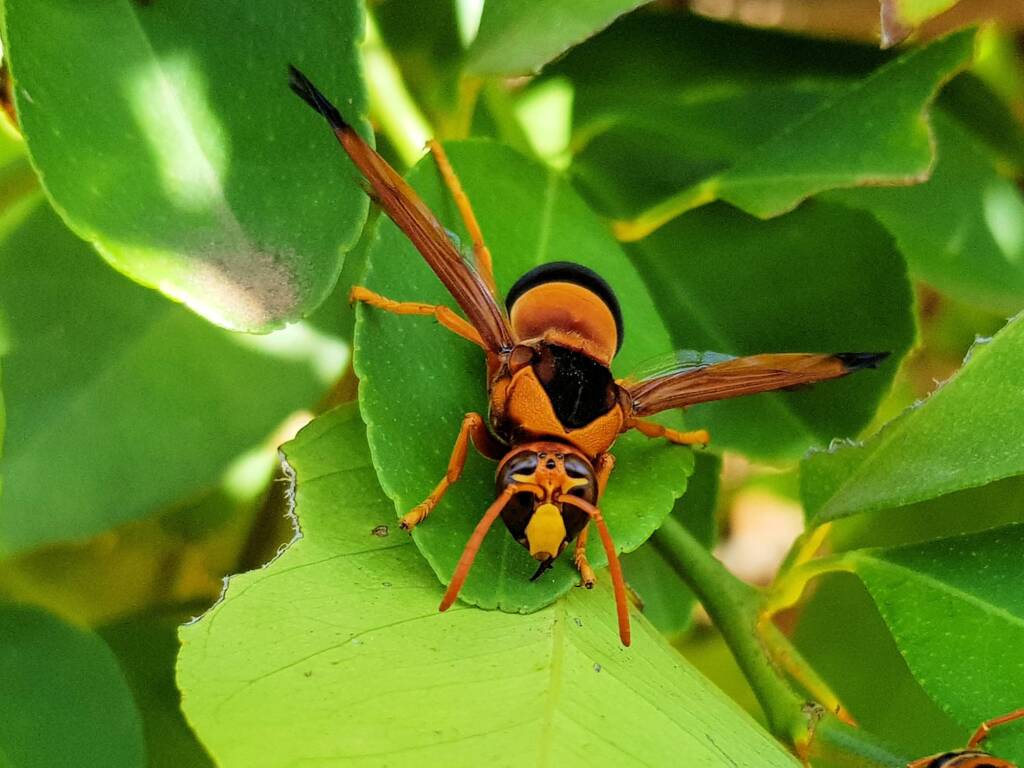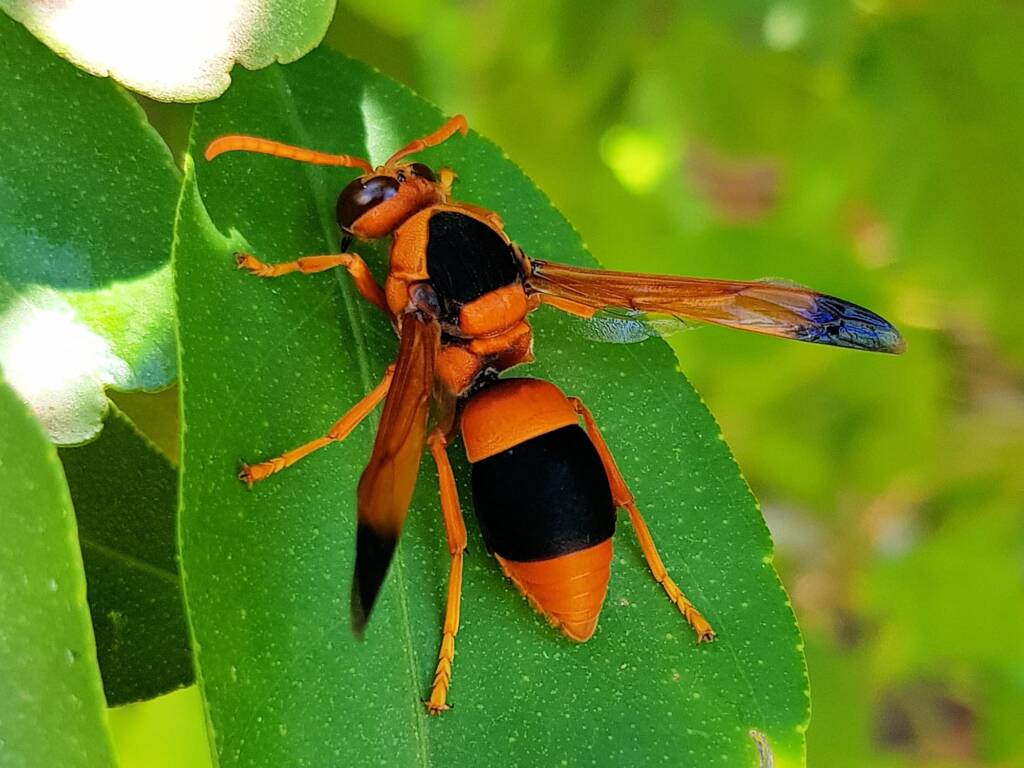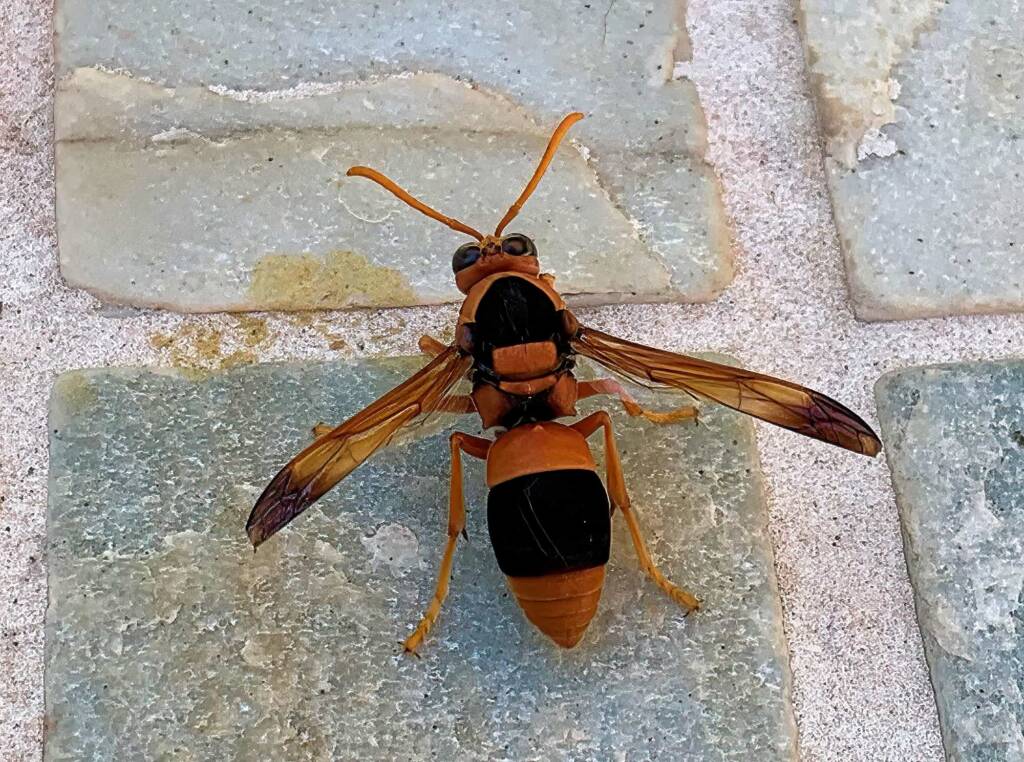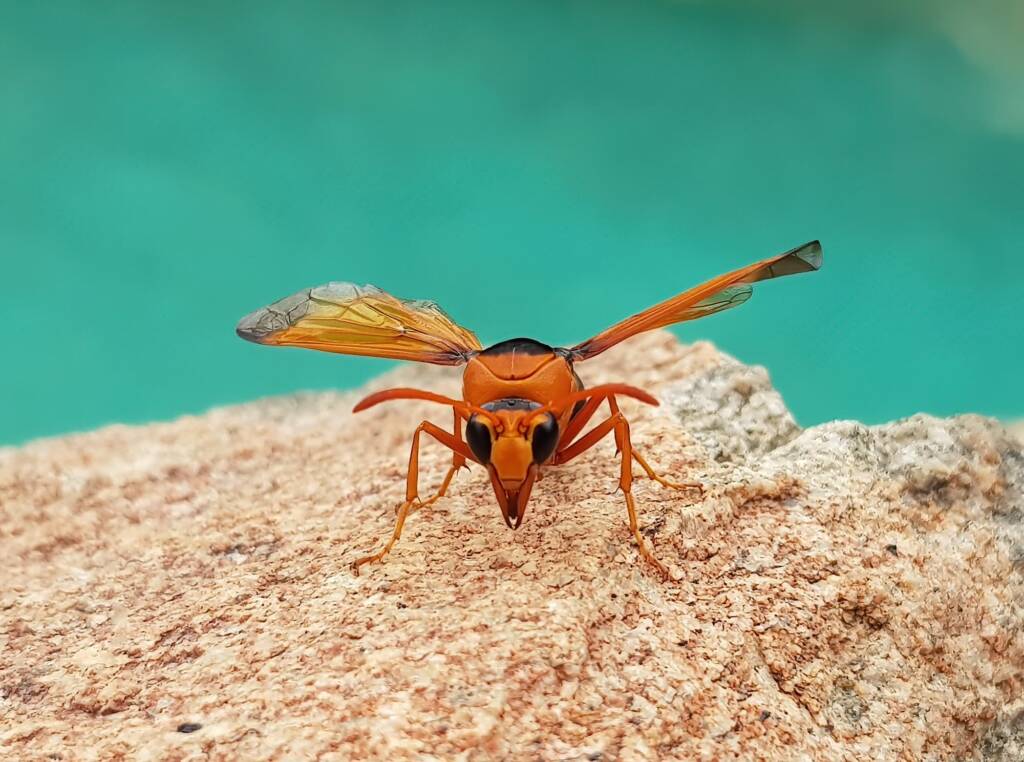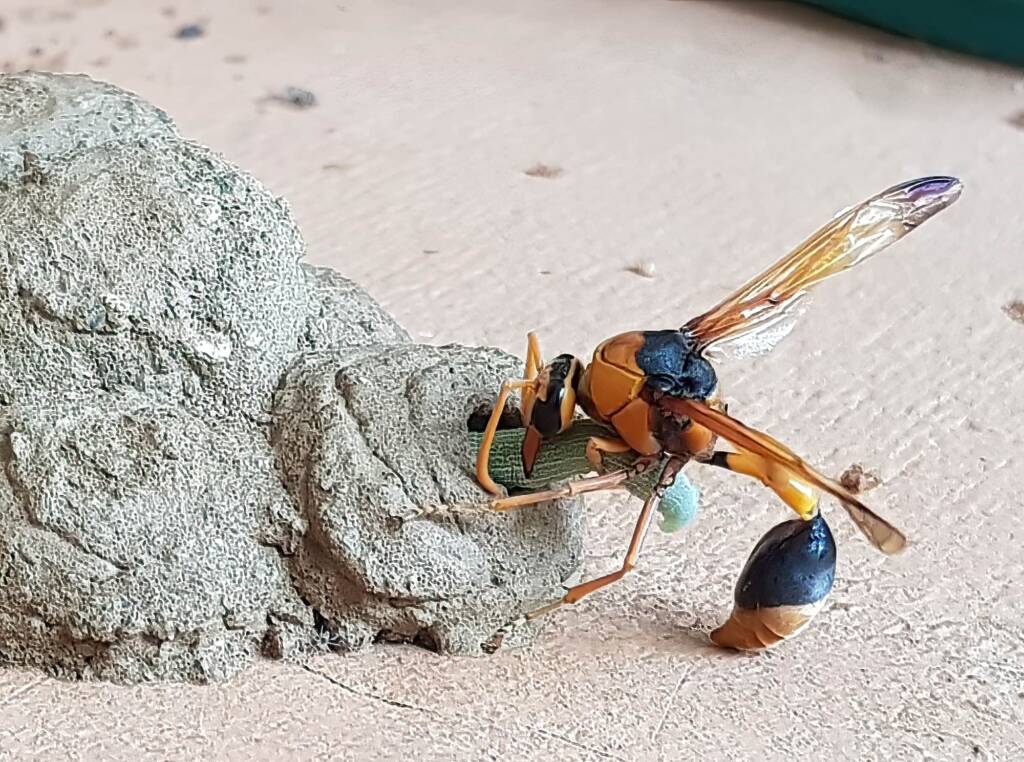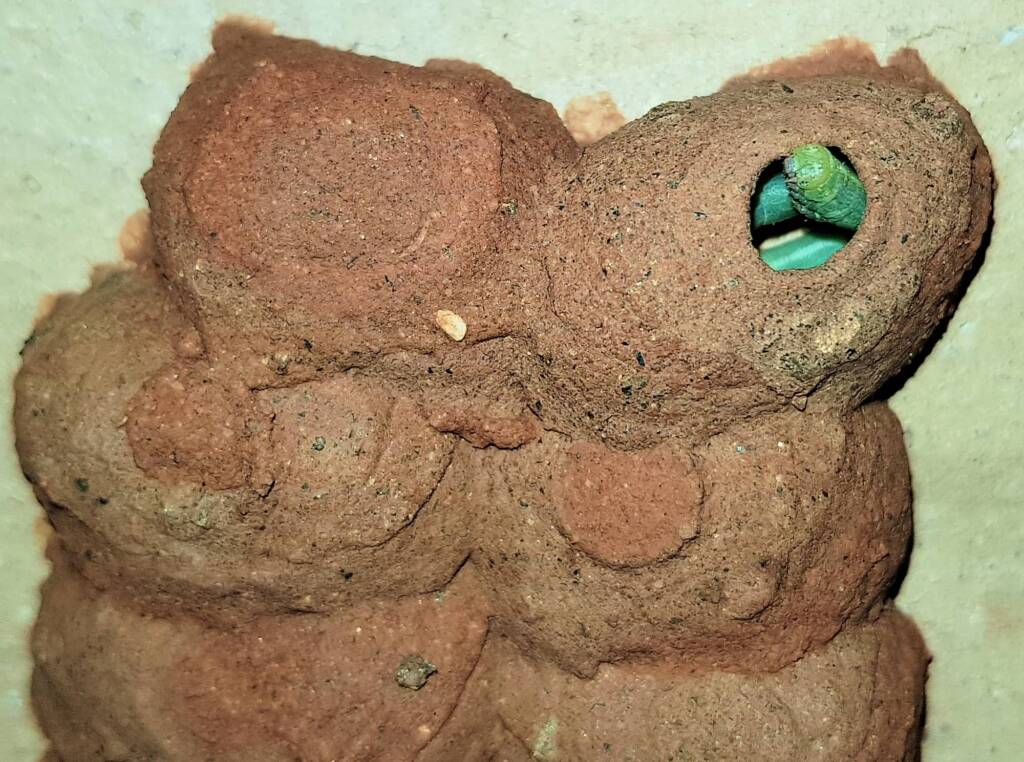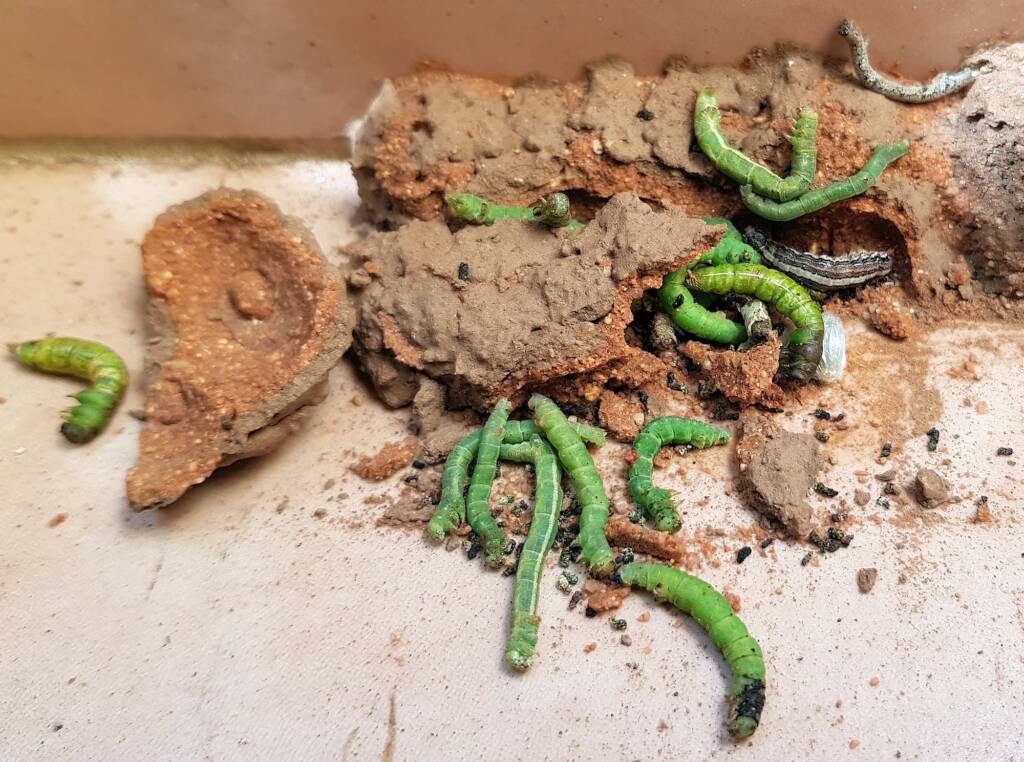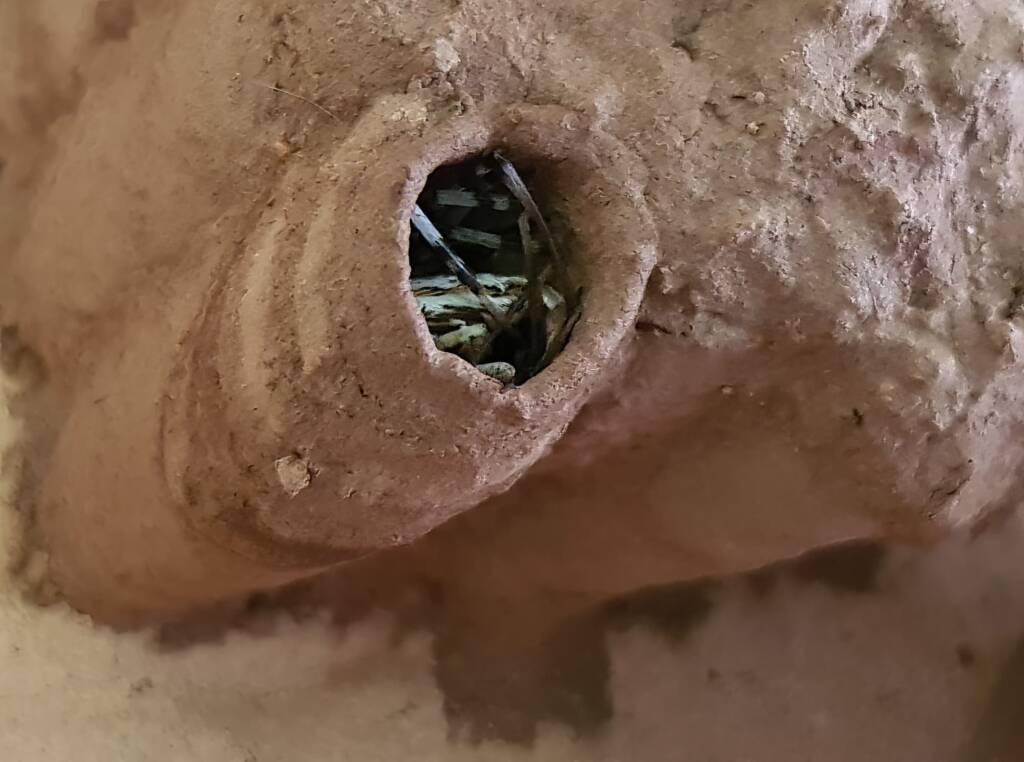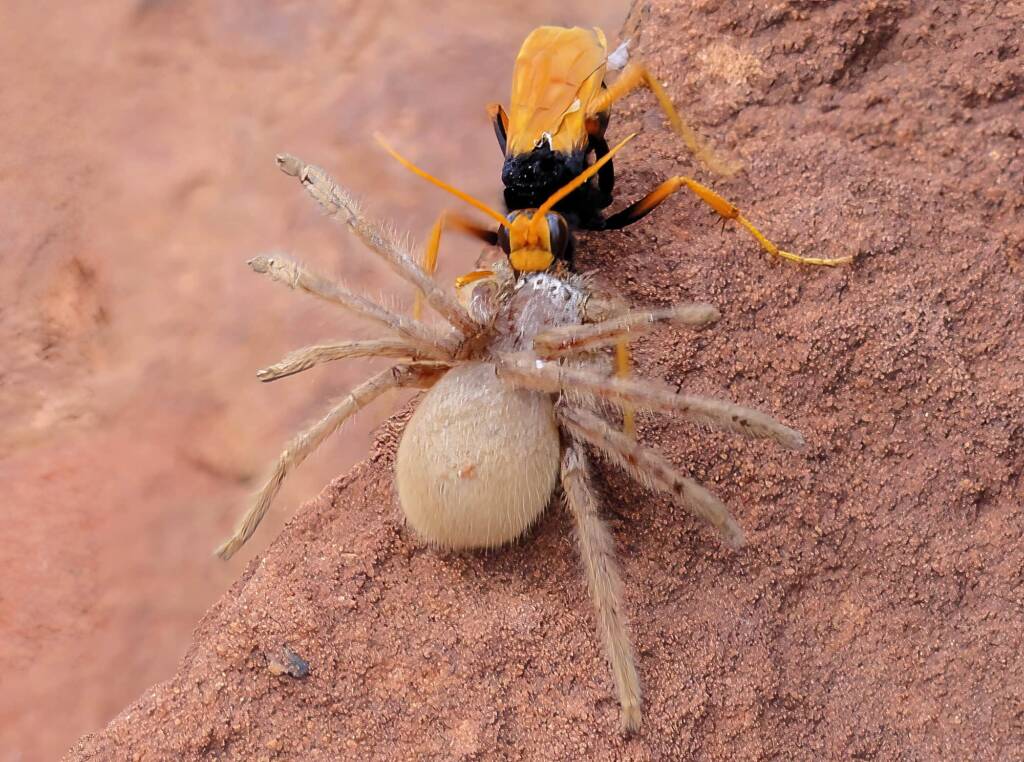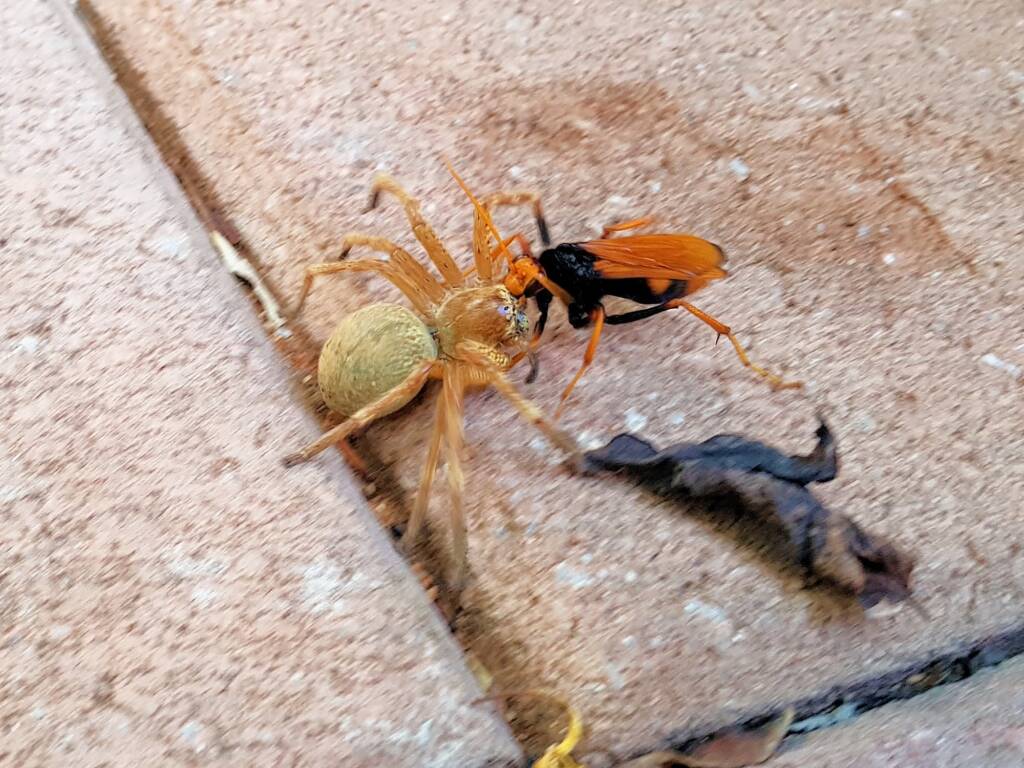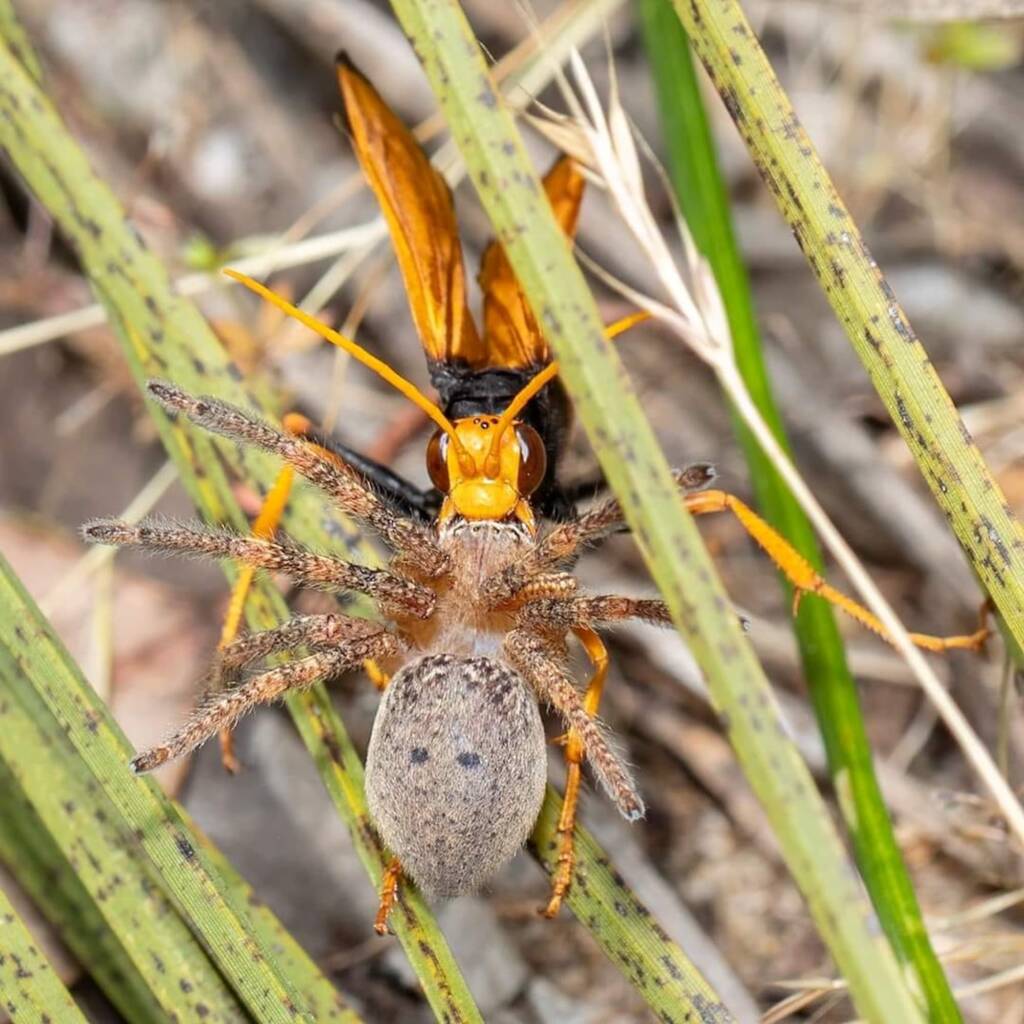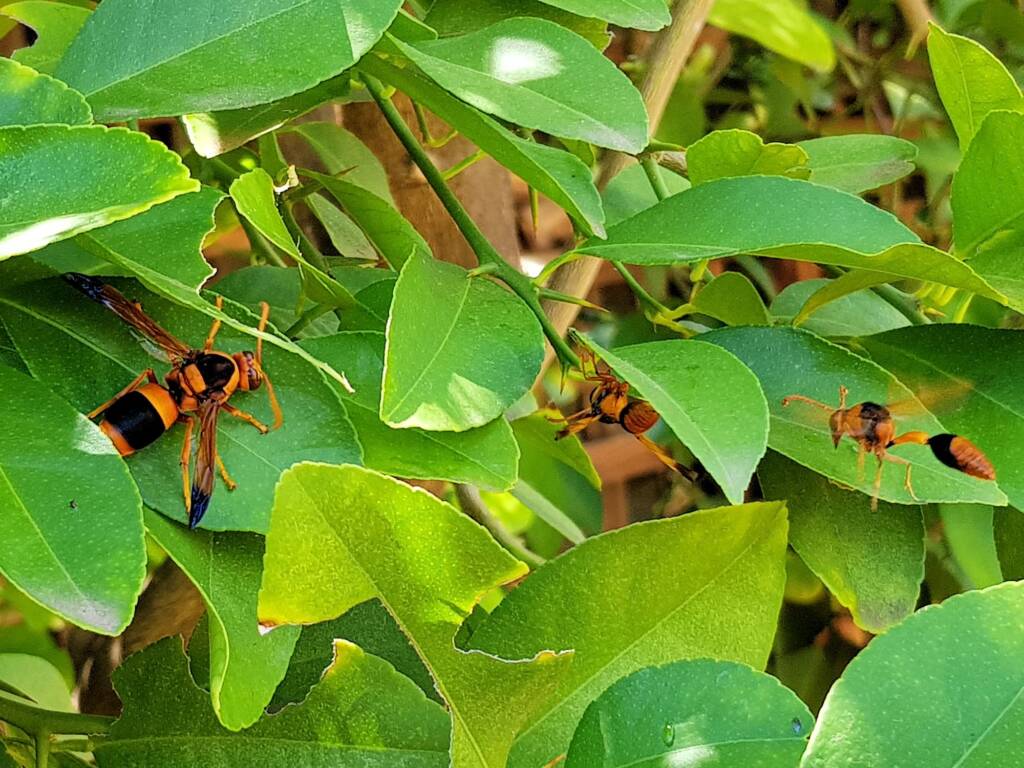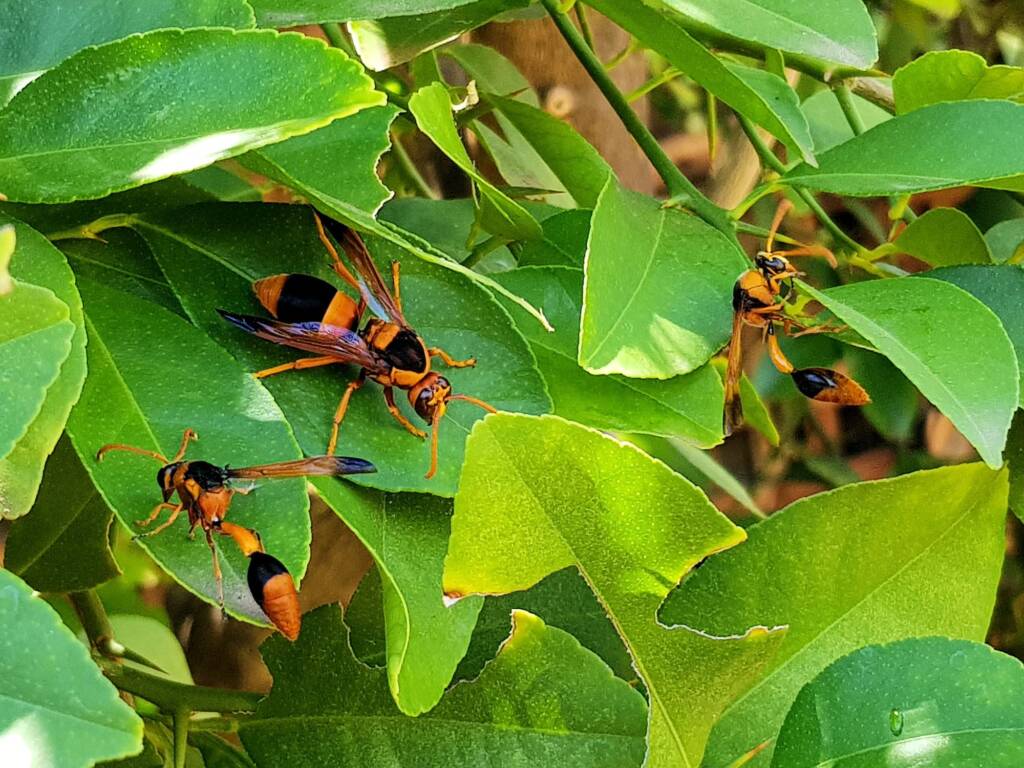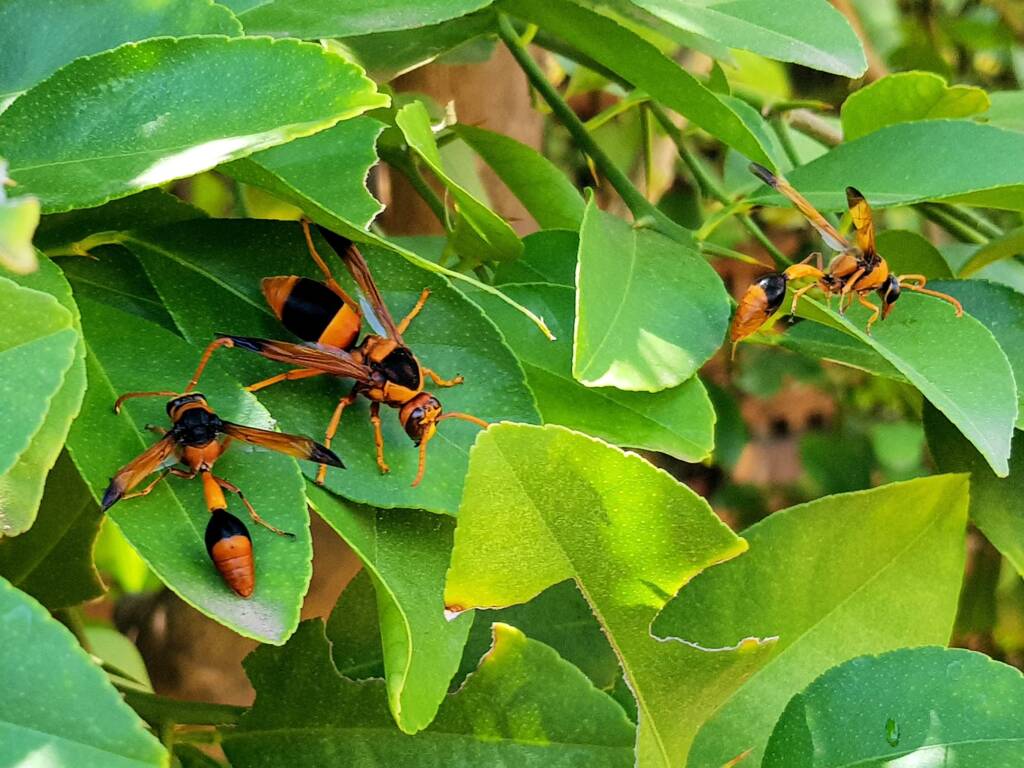Australia is home to many thousands of native species of wasps, including a few introduced and feral species. In Australia, some of our wasps are solitary, whilst other live in groups. They come in a variety of colours, distinctive shapes and sizes. Among the many wasp species, the most noticeable are our large wasps. These large wasps encompass a number of different species, with most being solitary wasps.
Now let us tackle that term “hornet”, which has been used incorrectly to apply to some species of large wasps that are native to Australia, in particular the species that are black and orange in colour. The term “hornet” is incorrect, as true hornets do not occur in Australia.
It is a sad state of affairs when the term “hornet” is applied to our beautiful wasps species such as the Mud-nest Wasps (genus Abispa) and our Orange Potter Wasps (subfamily Eumeninae genus Delta).
Of the two genus, Abispa and Delta, the Abispa is considered the largest Australian wasp at up to 40 mm in length. When comparing Abispa ephippium and Delta latreillei, they actually appear similar in length, although Abispa ephippium has a much stockier appearance.

In Australia, our Mudnest Wasps and Potter Wasps are very different in habits from true hornets.
True hornets are social wasps (of the genus Vespa), and are closely allied with the genus Vespula (that are associated with the European Wasps and the American “yellowjackets”) and like them, create large well-defended colonies composed of a papery material. The European Wasp, Vespula germanica, unfortunately has become an established pest species in Australia.
True hornets prey on other insects and chew them into a paste as food for their larvae. Our Mudnest Wasps and Potter Wasps, collect caterpillars or spiders (depending on the wasp species) as food prey for the egg/larvae in their nest cells.
Another wasp that is misidentified as a hornet is our spider wasp, such as the Orange Spider Wasp (Cryptocheilus bicolor), a large, orange and black coloured spider wasp from the family Pompilidae.
Just like our native bees, our native wasp play a critical role in the environment. Whilst some wasps feed on nectar (aiding in plant pollination), equally as important are those whose roles are as predators and parasites, whose larvae feed on caterpillars, spiders, and many other insects.
There is a great information sheet from the Western Australian Musuem website (detals in our Footnote & References below).
- Scientific classification
- Kingdom: Animalia
- Phylum: Arthropoda
- Class: Insecta
- Order: Hymenoptera
- Family: Vespidae
- Subfamily: Eumeninae
- Tribe: Odynerini
- Genus: Abispa
- Scientific classification
- Kingdom: Animalia
- Phylum: Arthropoda
- Class: Insecta
- Order: Hymenoptera
- Family: Vespidae
- Subfamily: Eumeninae
- Genus: Delta
- Species: Delta latreillei
previously - Genus: Eumenes
- Species: E. latreilli
- Subspecies: Delta latreillei latreillei
- Scientific classification
- Kingdom: Animalia
- Phylum: Arthopoda
- Subphylum: Hexapoda
- Class: Insecta
- Subclass: Pterygota
- Order: Hymenoptera
- Suborder: Apocrita
- Infraorder: Aculeata
- Superfamily: Pompiloidea
- Family: Pompilidae
- Subfamily: Pepsinae
- Tribe: Pepsini
- Genus: Cryptocheilus
- Species: Cryptocheilus bicolor
Footnote & References
- Hornets and Large Wasps, Information Sheet, Western Australian Museum, https://museum.wa.gov.au/sites/default/files/Hornets%20&%20large%20wasps.pdf
WaspsWasps Index Australian Large Wasps Australian Mud Nest Wasps Mud Wasp Velvet Ants Abispa ephippium Acarozumia amaliae Aulacidae Australodynerus Bembix Bembicinae Blue Hairy Flower Wasp Braconidae Chrysididae Cryptocheilus bicolor (Orange Spider Wasp) Delta latreillei (Potter Wasp) Eumeninae Ferreola handschini (Orange-collared Spider Wasp) Flower Wasps Gasteruptiid Wasp Hairy Flower Wasps Isodontia (Grass-carrying Wasp) Lissopimpla excelsa (Orchid Dupe Wasp) Mutillidae Paralastor sp. Pseudabispa bicolor ssp. nigrocinctoides Radumeris radula (Yellow Hairy Flower Wasp) Radumeris tasmaniensis (Yellow Hairy Flower Wasp) Sceliphron laetum Thynnid Wasps Tiphiidae Yellow and Black Wasp
InsectsBees Beetles Blattodea Butterflies Coleoptera Cicada Crabronidae Diptera Dragonflies & Damselflies Formicidae Hemiptera Heteroptera (True Bugs) Mango Planthopper Moths Orthoptera Orthopteroid Processionary Caterpillar Stink Bugs, Shield Bugs and Allies Syrphidae Wasps Water Scorpion (Laccotrephes tristis) Witchetty Grub



